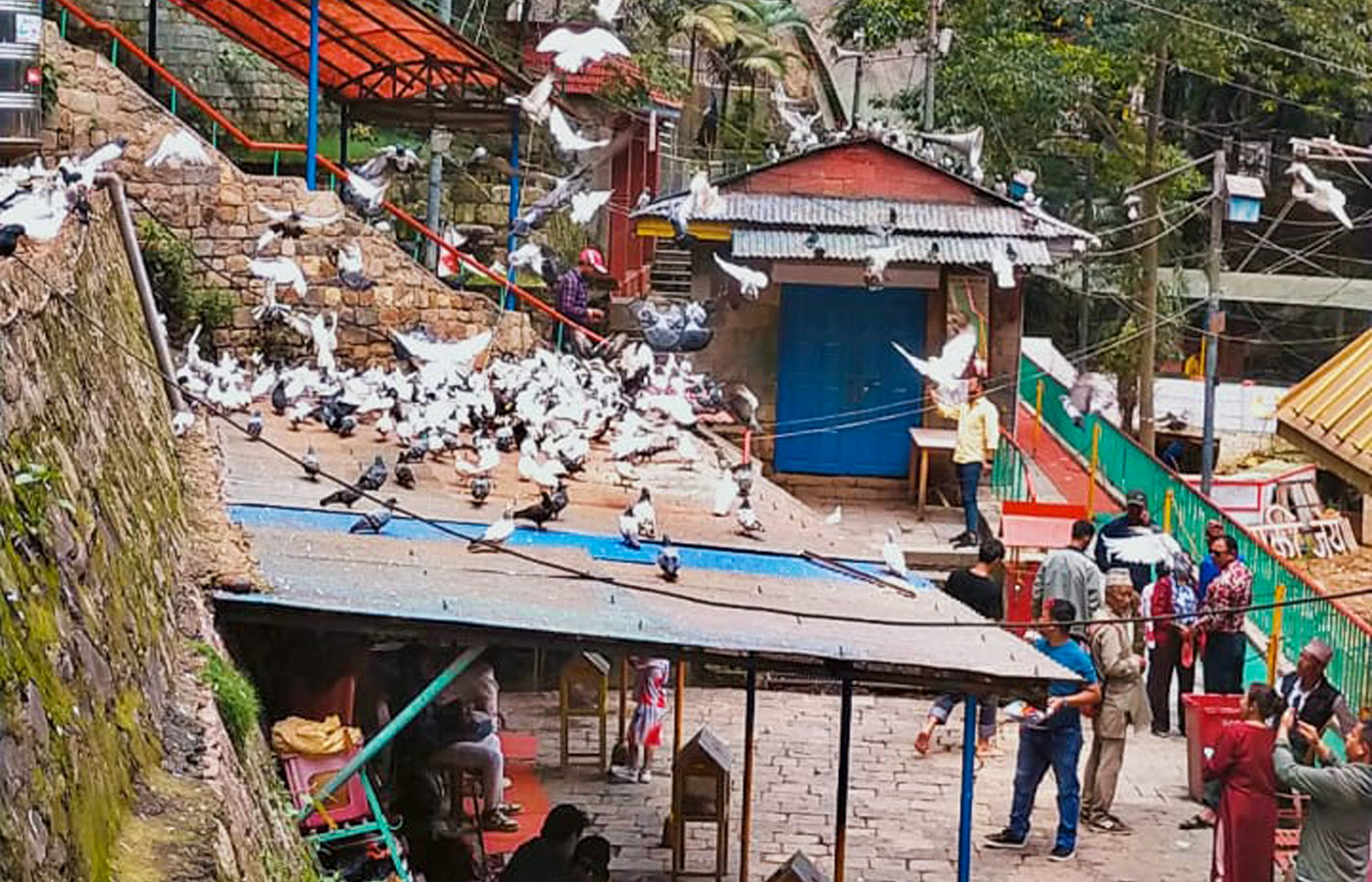There is a small Newari community located 19 kilometers to south of Kathmandu. Tibetans refer to Pharping "Parphing" as Yangleshö and Phamting. It is considered to be one of the most important pilgrimages for Vajrayana Buddhists and was also Phamtingpa, Naropa's heart-son’s hometown.
The Yang-le-Shod and the Asura Caves are both associated with Guru Rinpoche and serve as meditation practice locations. He attained a high level of enlightenment in his spiritual life through the practice of meditation in these caves. In addition, the sacred Vajra Yogini shrine can be found in this area.
Buddhist places and nearby temples around Pharping
Yang–le–shod:
If you are traveling to Pharping, you will go to a temple called Sesh Narayan Than, which is also known as Yang-le-shod. This temple is tucked away behind a rocky cliff wall and is adjacent to a Tibetan monastery. It was in this location that Guru Rinpoche, a monk born from a lotus flower, overcame gods, ghosts, and demons on his path to attaining Mahamudra. The well-known Vishnu shrine that is revered by Hindus can also be found in this area. A small cave located close to a temple is the location where Rinpoche attained the power of Mahamudra and vanquished the "demon." On the cave's walls and ceiling, there are a number of impressions that look like the Guru's head. In addition, there is a humble gompa that was built in Guru Rinpoche's honor after he passed away.
Asura Cave - Pharping Gumba:
Asura Cave is yet another great meditation cave, and it can be found in close proximity to the great white monastery. It is hidden in the hills above Pharping. Through the practice of Yangdak Heruka and Dorje Phurba, Guru Rinpoche was able to overcome obstacles on the spiritual path and eventually achieve enlightenment. The handprint that is located close to the cave entrance can be seen on the top left of the cave's entrance. Many people believe that it is an imprint of Guru Rinpoche, while others think that it is an avatar of Gorakhnath, an Indian yogin. However, some people believe that it is an avatar of Situ Rinpoche.
Both of these caves are connected on a spiritual level and hold a tremendous amount of importance for Vajrayana practitioners. To get inside, you have to take off your shoes and bend over to reach the low-ceilinged cavern that is illuminated by butter lights and decorated with silk scarves that have been wrapped around small statues. According to many people, including holiness Dujom Jigdral Yeshe Dorje, believe that these caves hold the same level of significance for Vajrayana Buddhists as Bodhgaya in India does. Not only are they the birthplace of their traditions, but they are also their spiritual heart.
The Temple of the Vajra Yogini:
This temple was constructed in the Newari style during the 17th century and is dedicated to the Vajra Yogini. In her mythology, she is depicted as an inquisitive monk who is a counterpart to Buddha in Buddhist mythology. She is revered as the embodiment of unadulterated awareness, which is why she is also known as the Blue Trinity or the Indra Yogini. To get to the temple, descend a set of stairs into the Guru Rinpoche Cave.
Dakshinkali Mandir

Dakshinkali Temple, located in Pharping, Nepal, is a significant Hindu shrine dedicated to the goddess Kali. It's a popular pilgrimage site known for its unique rituals, including animal sacrifices, and is situated about 22 kilometers south of Kathmandu. It's situated in a rocky cleft near the confluence of two sacred streams in Pharping, a town near Kathmandu. The temple is dedicated to Kali, a fierce form of the Hindu goddess Durga, often associated with destruction and empowerment. Animal sacrifices, particularly of male goats and cockerels, are a central part of the worship, especially during the Dashain festival. The temple's history is rooted in legend, with some accounts suggesting it was built in the 14th century after a divine vision. Dakshinkali is one of the Shaktipeeths (shrines dedicated to the goddess) in Hinduism, representing a powerful and revered place of worship.
Famous and Viral Pharping Suspension Bridge
The Viral Pharping suspension bridge, also known as the Pharping-Sokhel Suspension Bridge, is a popular attraction and is recently known as the Viral Pharping Bridge among Nepalese locals in the Pharping area of Kathmandu, Nepal. It's a scenic suspension bridge that offers views of the surrounding landscape and is a popular spot for both locals and tourists. While the exact length of the Pharping bridge is not explicitly stated in the provided search results, it is described as a suspension bridge that is part of a route to Dakshinkali Temple. The bridge is located on the way to Dakshinkali Temple from Pharping, specifically on the right side of the road leading to Dakshinkali.
View from Pharping Hike - Viral Pharping Bridge

How can I get to the Pharping?
Taxi: Pre-paid cab is the quickest way to travel from Kathmandu to Pharping via Taudaha; the driving distance is about 18 kilometers. Driving costs between 800 to 1000 and takes 30 minutes.
Pathao, Indrive, or Yango app: You can also take a drive to Pharping as well. They offer you a drive at a minimum price. Simply go to the mobile app and download any of these apps and add your destination, Pharping.
Local Bus: Driving, which costs between Rs. 50 and Rs. 150 and takes 60 minutes, is the most affordable way to go from Kathmandu to Pharping. Or check out the more Transportation guides in Kathmandu.
In Conclusion
This is a great place to start for those who have never heard of the town before. In this post, we discussed the history of Pharping and the importance of the town in Buddhism. We hope that you found this article to be interesting and informative, and we would love to hear from you! Please reach out to us anytime. Thank you for reading!



